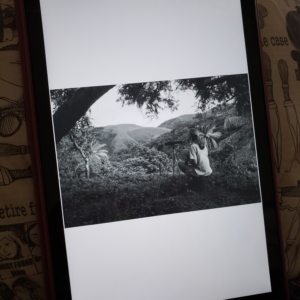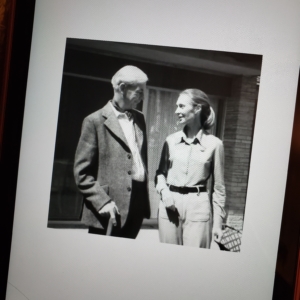The Book of Hope
A Survival Guide for Trying Times
by Jane Goodall; Douglas Abrams
publish date: 19-Octoer-2021 Celadon Books
AMBER LOVE 13-SEPT-2021 This review is a courtesy provided by NetGalley. To support this site and my other work, please consider being a monthly donor at Patreon.com/amberunmasked; you can also buy my books through Amazon (or ask your local retailer or library to order copies). I’ve also curated lists of books and other things I like on Amazon so you can shop through my lists of recommended products.
Publisher’s summary:
In a world that seems so troubled, how do we hold on to hope?
Looking at the headlines — the worsening climate crisis, a global pandemic, loss of biodiversity, political upheaval — it can be hard to feel optimistic. And yet hope has never been more desperately needed.
In this urgent book, Jane Goodall, the world’s most famous living naturalist, and Douglas Abrams, the internationally bestselling co-author of The Book of Joy, explore through intimate and thought-provoking dialogue one of the most sought after and least understood elements of human nature: hope. In The Book of Hope, Jane focuses on her “Four Reasons for Hope”: The Amazing Human Intellect, The Resilience of Nature, The Power of Young People, and The Indomitable Human Spirit.
Drawing on decades of work that has helped expand our understanding of what it means to be human and what we all need to do to help build a better world, The Book of Hope touches on vital questions, including: How do we stay hopeful when everything seems hopeless? How do we cultivate hope in our children? What is the relationship between hope and action? Filled with moving and inspirational stories and photographs from Jane’s remarkable career, The Book of Hope is a deeply personal conversation with one of the most beloved figures in the world today.
While discussing the experiences that shaped her discoveries and beliefs, Jane tells the story of how she became a messenger of hope, from living through World War II to her years in Gombe to realizing she had to leave the forest to travel the world in her role as an advocate for environmental justice. And for the first time, she shares her profound revelations about her next, and perhaps final, adventure.
The second book in the Global Icons Series — which launched with the instant classic The Book of Joy with His Holiness the Dalai Lama and Archbishop Desmond Tutu’s The Book of Hope is a rare and intimate look not only at the nature of hope but also into the heart and mind of a woman who revolutionized how we view the world around us and has spent a lifetime fighting for our future.
There is still hope, and this book will help guide us to it.
Review:
Author Doug Abrams is a brilliant interviewer and biographer. He has a great knack for presenting Jane Goodall’s words from their conversations and drawing out when it’s important to be personal versus global. “Hope” is a broad subject; and Goodall, herself, has had such a full and meaningful life — yet the subjects are one cohesive message. Abrams brings four specific missions to the table and presents them clearly.
Interviewing and for that matter, answering, can easily off on tangents. Abrams and Goodall work so well together in keeping this collection of personal stories linked to all of the missions of the Jane Goodall Institute and Jane’s individual work.
Goodall is a trailblazer in science and especially for women. She was the first person to study chimpanzees in the wilds of Africa to which she credits her friend/employer/mentor Louis Leakey (the man who also provided the opportunities for Dian Fossey and Biruté Galdikas to conduct their research). The most fascinating characters of Goodall’s life are woven through the chapters on hope, science, activism, resilience, and the human spirit. Characters like David Greybeard, one of the most important primates in the history of biological research. He was the chimpanzee that Jane noticed fashioned tools to get food. It was a breakthrough like many of her other benchmarks.
Much of Abrams and Goodall’s conversations take place over her ritual evening dram of whiskey (her favorite being Johnnie Walker green). Readers may be transported to Africa, to the Netherlands, or to the virtual space when these two had to remain separated during the pandemic. In Dar es Salaam at Jane’s house where used to spend much of her time but now only visits on her short trips, Abrams asked one of the most pressing questions one could ask such a historical figure: Have you ever lost hope? The way Goodall answers Abrams in this and all his thoughtful questions is that she explains where things when she began, the traumas or tragedies along the way, and then solidifies her own stubbornness in not being willing to give up or give in when there is a problem to solve.
Of the four reasons Jane Goodall has hope, the second — the chapter on the resilience of nature — is quite honestly, something everyone should read. The traumas that humans have done to the planet may be irreparable. Yet, hope is seen when trees in areas of bombings/man’s attacks manage to bloom one fresh leaf or eventually grow a new branch in time. This regrowth is explained in somber detail about Jane’s time in New York City with the Survivor Tree at the 9/11 Memorial and in her visit to Nagasaki where two five-hundred-year-old sister trees still fight to stand despite their burned damage. Abrams includes photos of these trees and many other key factors in Goodall’s reasons for hope.
Education is something else Goodall emphasizes and works to improve with JGI’s children’s program, Roots and Shoots. The first Roots and Shoots group of kids was ridiculed for working without compensation. They cleaned a beach and not because their parents told them to, but because it needed to be done. They persevered and showed the people of Tanzania what volunteerism is and how can be effective.
Summary:
While there are plenty of sad stories from Goodall about the world, the treatment of animals, the death of her dear husband Derek, and her own time living through World War II, Doug Abrams lifts the veils of sorrow in order to show Goodall’s heart.
As she says about approaching life in her nineties, “…we must defeat two enemies, one against invisible, microscopic enemies; the other — our own stupidity, greed, and selfishness.”
Rating: 5 stars



